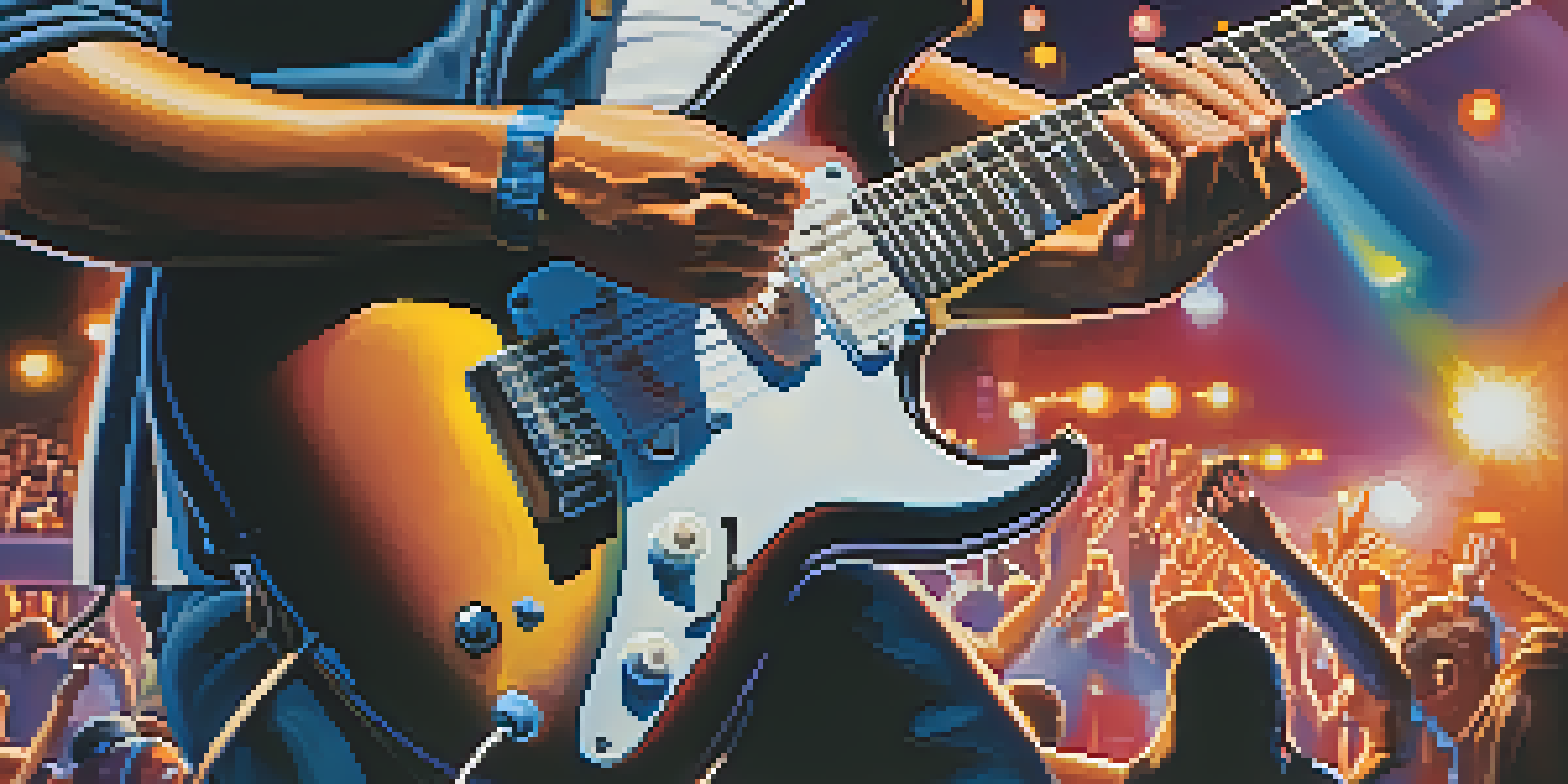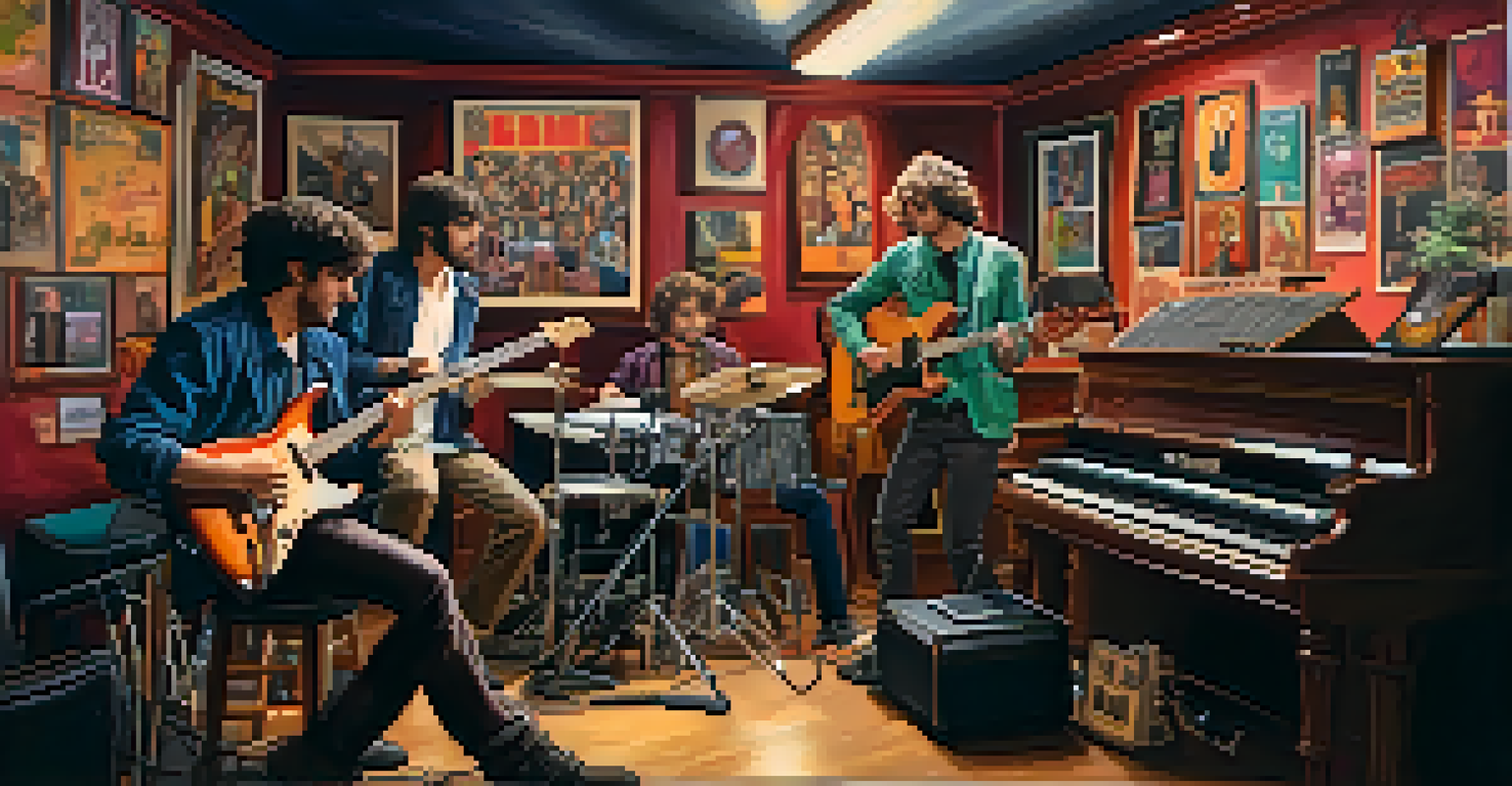Using Music Theory to Enhance Your Live Guitar Performance

Understanding Basic Music Theory for Guitarists
Music theory might sound daunting, but at its core, it's about understanding how music works. For guitarists, this means grasping concepts like scales, chords, and key signatures. Knowing these elements can help you make informed choices during a performance, enhancing your overall sound.
The beauty of music is in its ability to connect with people on an emotional level.
For example, if you know the key of the song you're playing, you can easily find which chords will work best. This foundational knowledge allows you to improvise confidently, creating solos that resonate with your audience. Think of music theory as a map; it guides you through the musical landscape.
Ultimately, a solid grasp of basic music theory can transform your guitar playing from a mechanical exercise into a creative expression. It opens up a world of possibilities, allowing you to connect with other musicians and your audience on a deeper level.
Using Scales to Create Engaging Melodies
Scales are like the building blocks of melody. When you understand different scales, you can craft melodies that not only fit well within a song but also captivate listeners. For example, the pentatonic scale is a favorite among guitarists for its versatility and ease of use.

Imagine playing a well-known song and adding your personal touch by improvising a melody using the pentatonic scale. This approach not only showcases your skill but also keeps the performance fresh and engaging. The audience loves to hear something familiar yet unique.
Music Theory Enhances Guitar Skills
Understanding music theory empowers guitarists to make informed choices, improving their performance and creativity.
Moreover, experimenting with different scales can evoke various emotions in your performance. Whether you want to create a happy vibe with a major scale or a more somber feel with a minor scale, your choice of scale can significantly impact the overall atmosphere of your live show.
Chords and Progressions: The Backbone of Your Performance
Chords and chord progressions form the backbone of most songs. Understanding how different chords work together can help you create solid and interesting transitions during your performance. For instance, the I-IV-V progression is a classic that feels familiar and uplifting.
Music is the shorthand of emotion.
By experimenting with various progressions, you can keep your audience engaged. Think about how you feel when a song takes an unexpected turn; it's a delightful surprise! Learning to mix and match chords can lead to refreshing interpretations of your favorite songs.
Additionally, incorporating advanced chords, such as seventh or suspended chords, can add depth to your performance. These subtle variations can make your playing more complex and intriguing, enhancing the emotional impact of your music.
The Role of Rhythm in Live Guitar Performance
Rhythm is just as crucial as melody and harmony in music. A solid sense of rhythm can elevate your performance, making it more dynamic and engaging. Think of rhythm as the heartbeat of your music; it keeps everything in sync and adds energy to your playing.
As a guitarist, experimenting with different strumming patterns or fingerpicking styles can significantly impact the feel of a song. For instance, a simple change in rhythm can turn a laid-back tune into something more upbeat, capturing the audience's attention.
Scales and Chords Build Melodies
Mastering scales and chord progressions allows guitarists to craft engaging melodies and maintain audience interest.
Moreover, incorporating techniques like syncopation—where the emphasis is placed on unexpected beats—can surprise and delight listeners. By playing with rhythm, you invite your audience to experience the music in a whole new way.
Improvisation: Freedom Through Music Theory
Improvisation is one of the most exciting aspects of live guitar performance. With a solid foundation in music theory, you can improvise with confidence, knowing that your choices are musically sound. It’s like having a conversation with your audience through your guitar.
Consider a scenario where you're jamming with a band. If you understand the key and chord structure, you can effortlessly add your flair without feeling lost. This spontaneous creativity not only showcases your skill but also creates a memorable experience for everyone involved.
Plus, improvisation allows you to express your unique voice as a guitarist. Each performance can be different, making every show a new adventure for both you and your audience.
Connecting with Your Audience Through Musicality
Music is ultimately about connection, and understanding music theory can enhance that bond with your audience. When you know how to manipulate dynamics, tempo, and phrasing, you can create a more emotional and engaging performance. This connection is what keeps audiences coming back for more.
For example, building tension before a big solo or softening your sound during an intimate moment can evoke powerful emotions. Your audience will feel the ups and downs, creating a shared experience that resonates long after the performance is over.
Rhythm Creates Engaging Performances
A strong sense of rhythm adds energy to guitar performances, making them more dynamic and captivating for listeners.
Moreover, incorporating call-and-response techniques can invite your audience to participate, turning a passive listening experience into an interactive one. This engagement not only elevates your performance but also fosters a sense of community.
Practicing Music Theory for Better Performance
To truly benefit from music theory in your guitar playing, regular practice is essential. Set aside time to work on scales, chords, and improvisation techniques that challenge you. Think of practice as a workout for your musical muscles; the more you train them, the stronger they'll become.
Consider incorporating music theory exercises into your daily routine, such as playing through different chord progressions or improvising over backing tracks. This consistent practice not only solidifies your understanding but also boosts your confidence during live performances.

Remember, the goal is to make music theory a natural part of your playing. As you become more comfortable with these concepts, you'll find that they enhance your creativity and expression, making every performance a unique reflection of your artistry.